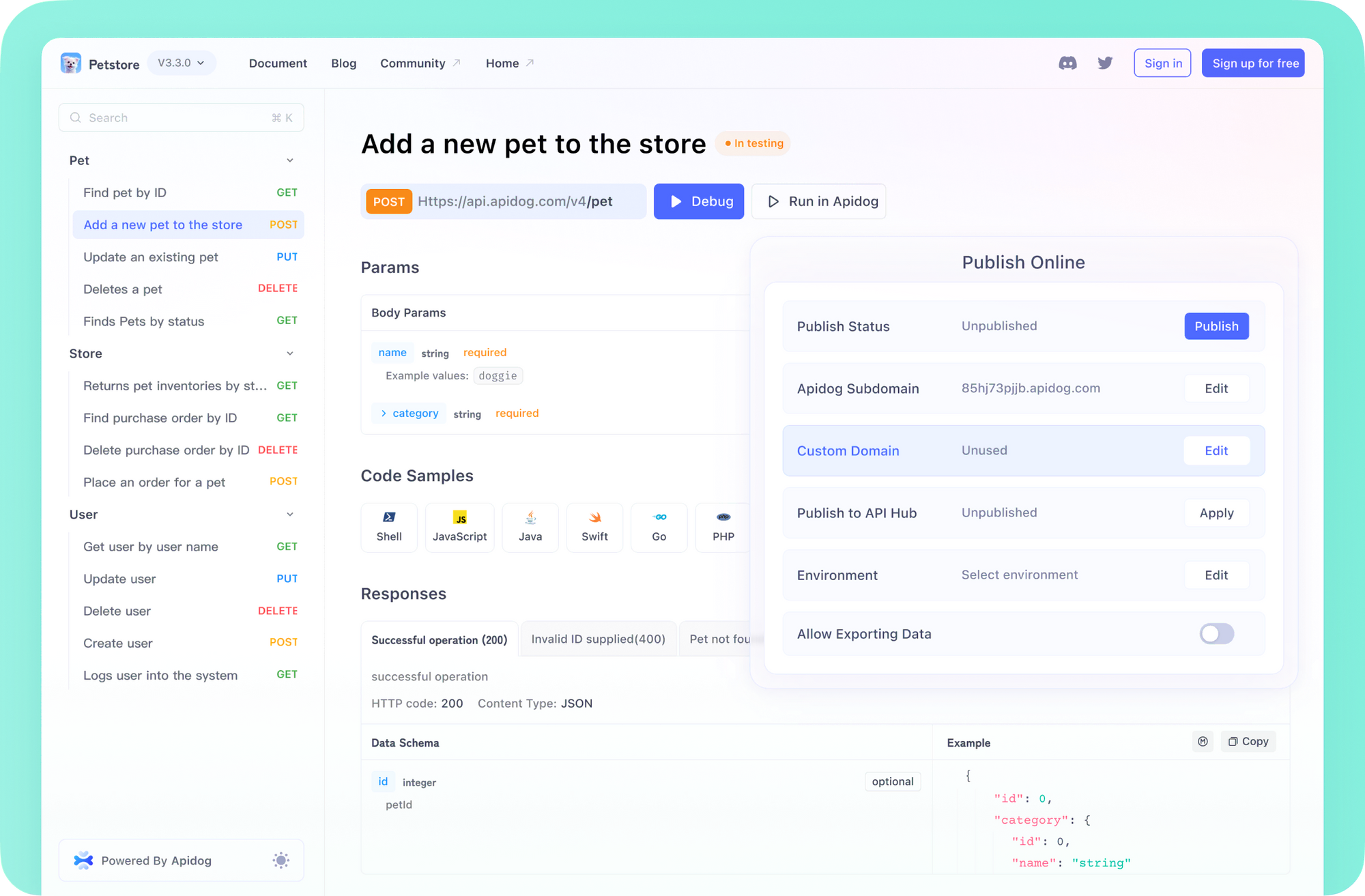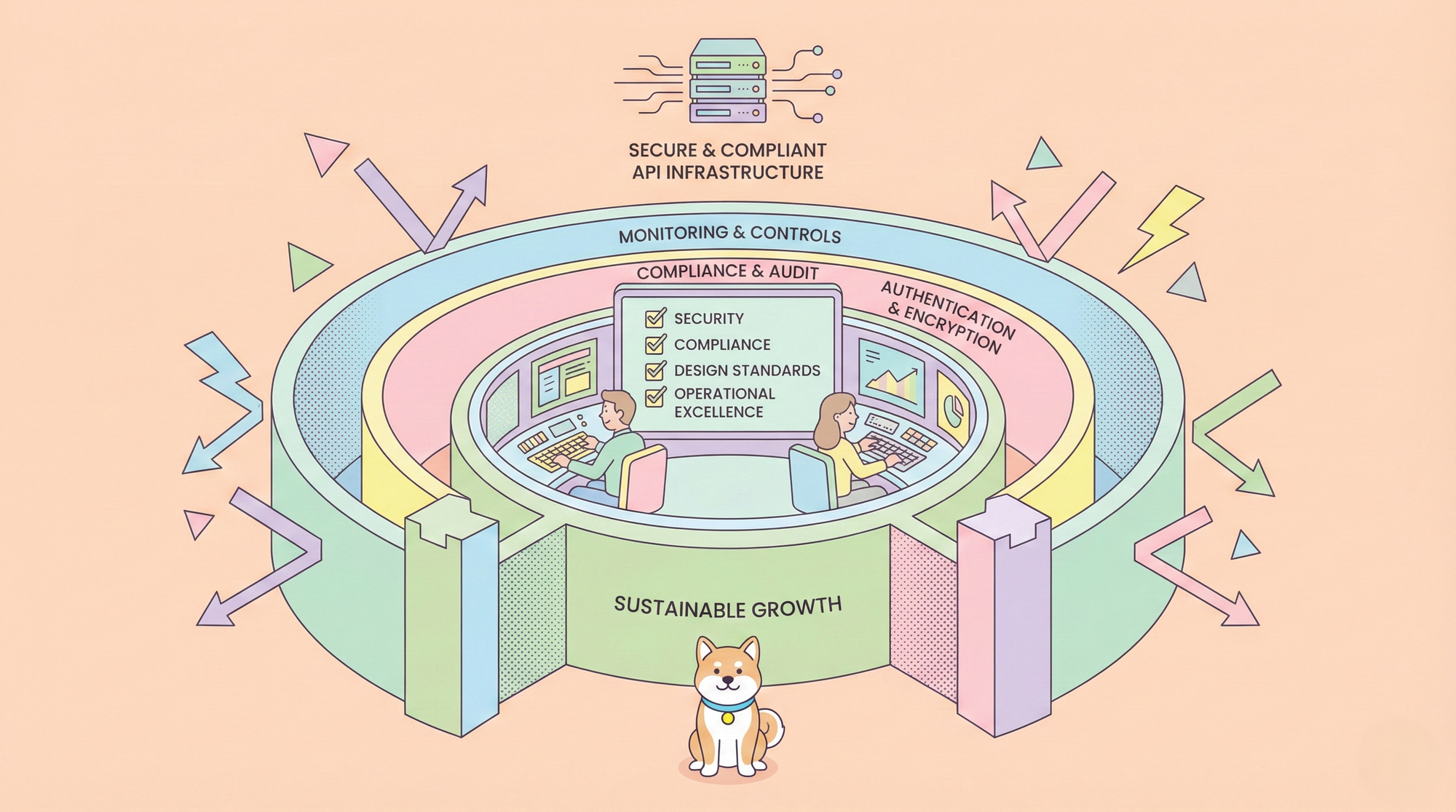In the world of software development, clear, concise, and accessible documentation is no longer a mere accessory; it is the bedrock of a successful project. Well-crafted documentation empowers developers to understand and effectively utilize APIs, frameworks, and libraries, fostering a vibrant and collaborative ecosystem. As we venture further into 2025, the tools available to generate these crucial resources have evolved, becoming more intelligent, collaborative, and deeply integrated into the development lifecycle.
Before we delve into the top 10 documentation site generators making waves this year, it's essential to spotlight a tool that has redefined the paradigm of API documentation: Apidog. More than just a documentation generator, Apidog presents a holistic, all-in-one platform for the entire API lifecycle, and its documentation features are a testament to this comprehensive philosophy.
Apidog: Where Documentation Meets the Full API Lifecycle
Apidog's approach to documentation is fundamentally different from standalone generators. It champions the "design-first" methodology, where documentation is not an afterthought but a living, breathing artifact that evolves in lockstep with the API itself. This tight integration is Apidog's core strength.
At the heart of Apidog's documentation capabilities lies its ability to automatically generate interactive API docs from OpenAPI (formerly Swagger) specifications. This eliminates the tedious and error-prone process of manual documentation, ensuring that what developers see is always an accurate reflection of the API's current state.

In 2025, Apidog has further distinguished itself with its forward-thinking AI-powered features. The platform now incorporates AI to assist in content generation, suggesting descriptions for endpoints and parameters, and ensuring a consistent and professional tone throughout the documentation.
Apidog is also at the forefront of making documentation more accessible to artificial intelligence with its support for LLMs.txt. This simple yet powerful addition allows large language models to easily discover and index the machine-readable version of the documentation, paving the way for AI-driven code generation and more intuitive developer assistance.

Real-time collaboration is another cornerstone of the Apidog experience. Teams can work together on API design and documentation simultaneously, with changes reflected instantly.
By embedding documentation directly within the API development workflow—from design and debugging to testing and mocking—Apidog ensures that documentation is never out of sync and is always a valuable asset rather than a burdensome chore.
10 Documentation Site Generators for Developers in 2025
While Apidog excels in the realm of API documentation, the broader landscape of documentation site generators offers a diverse array of tools tailored to different needs and preferences. Here are the top 10 contenders that are empowering developers to create exceptional documentation in 2025:
1. Docusaurus: The React-Powered Powerhouse
Developed and open-sourced by Meta, Docusaurus has solidified its position as a leading choice for building content-focused websites, especially documentation. Built on React, it allows for the creation of highly interactive and modern documentation sites.
- Key Features: Versioning for documentation, MDX (Markdown with JSX) for embedding React components directly in Markdown, a pluggable architecture, and built-in search functionality.
- Why it's a top pick in 2025: Docusaurus's vibrant ecosystem of plugins and its active development make it a future-proof choice. Its ability to create rich, interactive experiences is a significant advantage for projects that want to go beyond static text.
2. MkDocs: Simplicity and Elegance with Markdown
For those who prioritize simplicity and a "just write" experience, MkDocs remains a beloved option. Written in Python, it converts Markdown files into a clean and professional-looking static website.
- Key Features: A vast library of themes (with Material for MkDocs being a crowd favorite), a straightforward configuration in a single YAML file, and a fast build process.
- Why it's a top pick in 2025: Its low barrier to entry and the stunningly polished look provided by themes like Material for MkDocs make it an excellent choice for projects of all sizes that value a quick and easy setup.
3. Read the Docs: The Gold Standard for Open-Source Projects
Read the Docs is more than just a generator; it's a hosting platform that has become synonymous with open-source documentation. It automates the process of building, versioning, and hosting documentation from Git repositories.
- Key Features: Seamless integration with GitHub, GitLab, and Bitbucket, automatic builds on every push, support for multiple versions and translations, and a powerful search functionality.
- Why it's a top pick in 2025: For open-source projects, Read the Docs is an unparalleled solution that handles the entire documentation pipeline, allowing maintainers to focus on writing content. Its continued reliability and focus on the open-source community keep it at the top.
4. GitBook: Collaborative Knowledge Sharing
GitBook has evolved from a command-line tool into a sophisticated, cloud-based platform for creating and managing documentation. It offers a user-friendly editor and powerful collaboration features.
- Key Features: A modern, intuitive editor, real-time collaboration with comments and change requests, custom domains, and powerful integrations with services like GitHub and Slack.
- Why it's a top pick in 2025: GitBook's emphasis on a seamless collaborative writing experience makes it ideal for teams where both technical and non-technical members contribute to documentation. Its polished user interface and powerful organizational features are a major draw.
5. Nextra: The Next.js-Based Contender
Built on top of the popular React framework Next.js, Nextra is a powerful and flexible documentation site generator that has been gaining significant traction.
- Key Features: Leverages the full power of Next.js, including server-side rendering and static site generation, a simple and elegant default theme, and the ability to easily create custom layouts.
- Why it's a top pick in 2025: For developers already comfortable with the Next.js ecosystem, Nextra is a natural fit. Its performance, flexibility, and the backing of the Vercel ecosystem position it as a strong contender for the future.
6. Sphinx: The Python Documentation Veteran
The original powerhouse behind Python's official documentation, Sphinx remains a robust and feature-rich choice, particularly for projects within the Python ecosystem.
- Key Features: Writes in reStructuredText (a powerful and extensible markup language), excellent cross-referencing capabilities, automatic API documentation generation from docstrings, and multiple output formats (HTML, PDF, ePub).
- Why it's a top pick in 2025: For large and complex projects that require a high degree of structure and control over the output, Sphinx's maturity and extensibility are unmatched. Its deep integration with Python continues to make it the go-to for many Python libraries and frameworks.
7. Jekyll: The Blog-Aware Static Site Generator
As one of the earliest and most influential static site generators, Jekyll continues to be a solid choice for documentation, especially for those who appreciate its simplicity and the power of its templating language, Liquid.
- Key Features: Deep integration with GitHub Pages, a large collection of plugins and themes, and a straightforward, file-based approach to content management.
- Why it's a top pick in 2025: Jekyll's enduring popularity and its seamless integration with GitHub Pages make it an incredibly accessible option for developers looking to quickly get a documentation site up and running.
8. VitePress: The Vue-Powered Successor
From the creator of Vue.js, VitePress is the spiritual successor to VuePress, built on top of the lightning-fast build tool, Vite. It's designed to create fast and content-rich documentation sites.
- Key Features: Blazing-fast server start and hot module replacement thanks to Vite, a clean and minimalistic default theme, and the ability to use Vue components within Markdown.
- Why it's a top pick in 2025: For developers in the Vue.js ecosystem, VitePress offers a first-class experience. Its focus on performance and developer experience makes it a joy to work with.
9. Hugo: The Speed Demon
Written in Go, Hugo is renowned for its incredible build speed, capable of rendering large sites in a fraction of a second.
- Key Features: Unmatched build performance, a powerful templating system, and a single binary installation with no dependencies.
- Why it's a top pick in 2025: For projects with a massive amount of content, Hugo's speed is a game-changer. Its efficiency and simplicity make it a compelling choice for performance-conscious developers.
10. Mintlify: The AI-Native Documentation Platform
Mintlify is a newer entrant that has quickly made a name for itself with its strong focus on AI-powered documentation creation and a beautiful, user-friendly output.
- Key Features: AI-powered writing assistance, automatic generation of documentation from code, and a highly polished and interactive reading experience.
- Why it's a top pick in 2025: Mintlify's embrace of AI to streamline the documentation process is a clear indication of where the future is headed. Its focus on creating an exceptional end-user experience sets it apart.
Choosing the Right Tool for the Job
The ideal documentation site generator ultimately depends on the specific needs of your project, your team's technical expertise, and your desired level of customization. For those deeply embedded in the API development lifecycle, the integrated approach of a platform like Apidog offers unparalleled efficiency and accuracy. For open-source projects, the automated hosting of Read the Docs is a blessing. And for those seeking a balance of power and simplicity, tools like Docusaurus and MkDocs provide a fantastic starting point.
As we move through 2025, one thing is certain: the importance of high-quality documentation will only continue to grow. By leveraging the power of these modern documentation site generators, developers can ensure their projects are not only well-built but also well-understood, fostering a more collaborative and innovative future for all.
Want an integrated, All-in-One platform for your Developer Team to work together with maximum productivity?
Apidog delivers all your demands, and replaces Postman at a much more affordable price!



